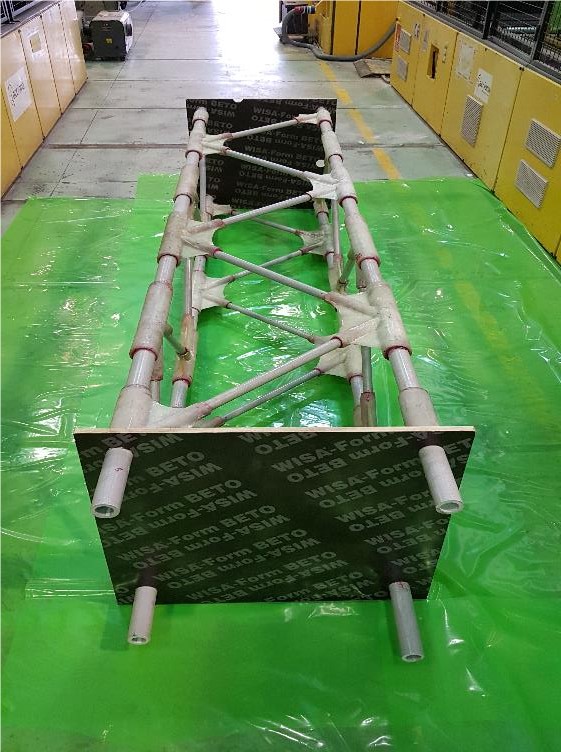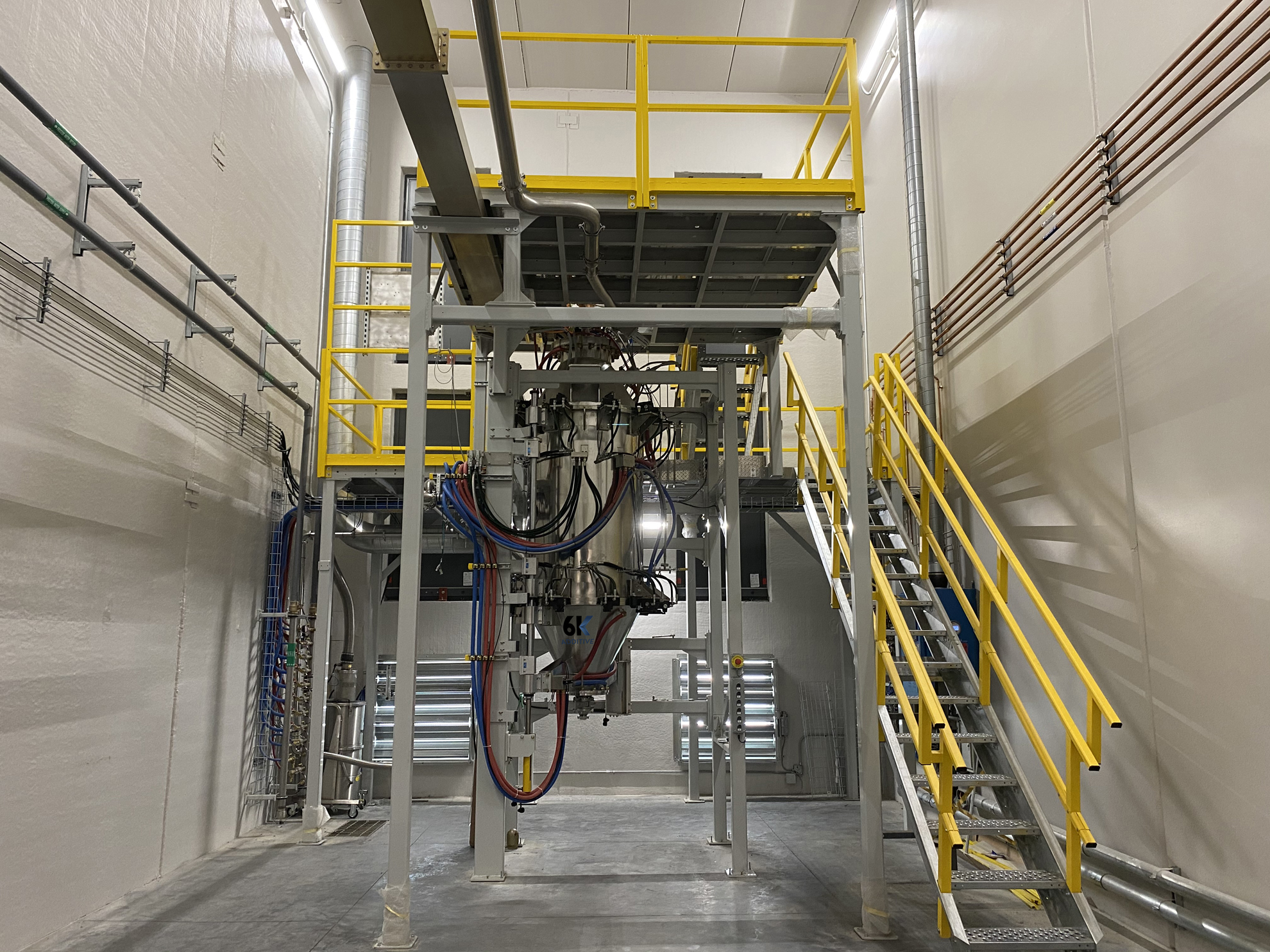The BARBARA project (Biopolymers with Advanced functionalities foR Building and Automotive parts processed through Additive Manufacturing) recently concluded four years of research into developing new 3D printable materials from food waste and agricultural by-products.
A total of eight new bio-based materials were successfully produced throughout the project, which were used to 3D print prototypes for the construction and automotive sectors.
Now, Marta Redrado Notivoli, the BARBARA project coordinator and chemical engineer at the Aitiip Technology Center (AITIIP), tells 3D Printing Industry how the project aims to scale up this work to eventually secure industrial investment.

Key learnings from the project
To create the 3D printable materials, natural dyes, bio-mordants, antimicrobials, and essential oils were extracted from pomegranate, lemon, almond shell, and corn through microwave-assisted extraction and other processes, such as the use of supercritical water.
“We learned how to process those compounds, together with commercial biopolymers, in order to obtain new polymeric materials used in advanced manufacturing processes with the properties required for application in the automotive and construction sectors,” explained Redrado.
The resulting materials underwent high temperatures, water cooling treatments, and material binding and reinforcing to create filament spools suitable for Fused Filament Fabrication (FFF). The 3D printing process was optimized for the bio-materials through the development of a heading device to improve layer adhesion during printing, therefore enhancing the mechanical properties of the final prototypes. A double nozzle 3D printer was used to control all parameters of the process.
“In total, three types of prototypes were manufactured during the project; door trims and fascia for cars, and molds for truss joints for buildings,” Redrado continued. “Six materials were tested for the automotive prototypes, four in the fascia and two in the trim, in order to showcase the different textures, colors, and functionalities achieved through the project’s technology.”
Meanwhile, two materials were tested for the construction of a monolithic mold, the aim being to achieve high thermomechanical properties in order to withstand the production demands of a knot. The monolithic joint concept was developed to simplify the manufacturing process of complex knots used in composite materials, an approach which had previously not been validated due to the complex geometries of the part.

Significance of the project’s achievements
The four-year project brought together 11 different partners who provided various specialisms in biotechnology, nanotechnology, advanced materials, and advanced manufacturing technologies.
“The BARBARA project has contributed to create two new value chains, as well as to the development of an innovative and forward-looking modern industry with the potential to revolutionize the production of new materials,” said Redrado. “An industry more in tune with the environment, and where new and more environmentally friendly extractive processes are implemented.”
Now that the project has officially concluded, Redrado believes the next step is to obtain a demo project which will allow the partners to scale up their processes to a semi-industrial level. To achieve this, the project teams have compiled a business plan to demonstrate the feasibility of the process.
“The final step would be a flagship project with industrial investment to reach the market and society to make circular bio-economy a reality,” said Redrado. “We need programs like the next Horizon Europe and Green Deal as well as associations like Bio-Based Industries Joint Undertaking (BBI JU) that can push for regulations and standardization.”

Waste as a resource
According to Redrado, projects like BARBARA show that waste can be a resource. By making use of 3D printers, product designers are able to print parts and assembly sets from diverse materials derived from waste, which exhibit different mechanical and physical properties. So far, the initiative has contributed to the growth of related industries within the bio-economy and circular economy European framework.
To make this fully scalable, though, Redrado believes five ‘pillars’ are needed: innovation, education, synergies, investment opportunities, and financing.
“With projects like BARBARA we are one step closer to a real circular economy, but other steps need to be taken,” she said. “We need regulations, labeling, policies, legal framework, standardization, and the generation of job profiles based on BARBARA research and development skills.
“We need European investment, not only money but resources, to achieve a real circular bio-economy.”
Achieving a global circular economy
There are various other initiatives currently underway to develop closed-loop manufacturing processes that reuse and repurpose waste materials. The circular economy is a notion that seeks to make optimum use of resources in order to avoid waste. An Imagine 2050 report by Veolia suggests that the food and beverage, manufacturing, and chemical industries, in particular, have enormous potential to reduce their waste and generate new revenue streams.
Aside from BARBARA, other examples of repurposing food waste for additive manufacturing processes include replacing petroleum-based PET with bioplastics derived from coffee powder and orange peel, and converting food waste into biodegradable PHAs.
Meanwhile, in the construction sector, Italian 3D printer manufacturer WASP 3D printed an eco-house with a material mixture made up of local soil and natural waste materials.
Most recently, advanced materials specialist 6K was awarded a Phase Two Small Business Innovation Research (SBIR) program from the U.S. Defense Logistics Agency (DLA) to commercialize a domestic closed-loop supply chain producing high-performance metal powders from scrap sources. 6K will use its proprietary microwave plasma platform, UniMelt, to source and reclaim nickel superalloy scrap components and convert them into aerospace-grade powders.

Subscribe to the 3D Printing Industry newsletter for the latest news in additive manufacturing. You can also stay connected by following us on Twitter and liking us on Facebook.
Be sure to subscribe to the Another Dimension podcast on your chosen podcast player to make sure you never miss an episode.
Looking for a career in additive manufacturing? Visit 3D Printing Jobs for a selection of roles in the industry.
Featured image shows the fascia prototype by AITIIP. Materials used (left to right): lemon pigment, lemon fragrance, almond shell, pomegranate pigment. Photo via BARBARA.



